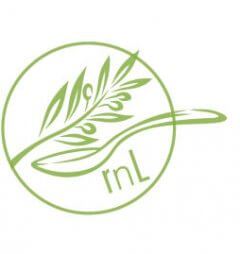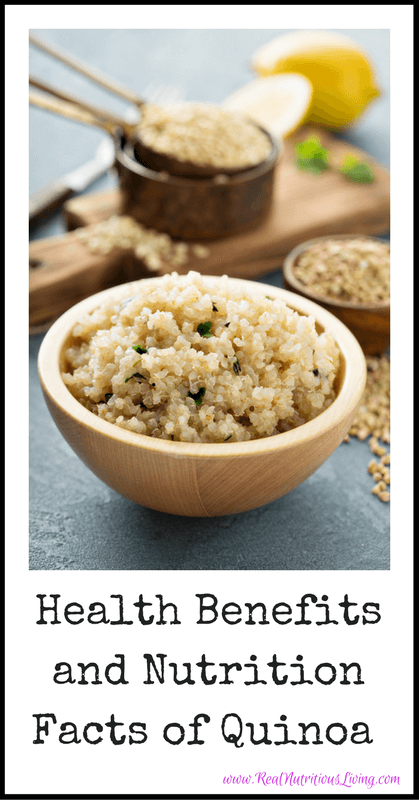Quinoa is a tiny, often overlooked, seed grain that I’ve been cooking more with lately. The reason I love cooking with quinoa is it pairs really nicely with just about any dish and takes on its flavor versus overpowering it. Read on to learn more about the Health Benefits and Nutrition Facts of Quinoa.
Quinoa (pronounced KEEN-wah) has the highest nutritional profile and cooks the fastest of all grains. It is an extremely high-energy grain and has been grown and consumed for about 8,000 years on the high plains of the Andes Mountains in South America. The Incas were able to run such long distances at such a high altitude because of this powerful grain.
Characteristics
- Contains all eight amino acids to make it a complete protein
- Has a protein content equal to milk
- High in B vitamins, iron, zinc, potassium, calcium & vitamin E
- Gluten-free; easy to digest
- Ideal food for endurance
- Strengthens the kidneys, heart, and lungs
- Contains almost twice as much fiber as most other grains, 5 grams = 20% of our daily intake
- High in Riboflavin (B2) which improves energy metabolism within the brain and muscles, and is known to help create proper energy production in cells
- Contains manganese, an antioxidant which helps to prevent damage to the mitochondria during energy production
One cup of cooked quinoa contains:
- 222 calories
- 4 grams of fat
- 13 milligrams sodium
- 39 grams carbohydrate
- 5 grams fiber
- 8 grams protein
- 1.2 milligrams manganese (58 percent DV)
- 118 milligrams magnesium (30 percent DV)
- 281 milligrams phosphorus (28 percent DV)
- 77.7 micrograms folate (19 percent DV)
- 0.4 milligrams copper (18 percent DV)
- 2.8 milligrams iron (15 percent DV)
- 0.2 milligrams thiamine (13 percent DV)
- 2 milligrams zinc (13 percent DV)
- 0.2 milligrams riboflavin (12 percent DV)
- 0.2 milligrams Vitamin B-6 (11 percent DV)
- 318 milligrams potassium (9 percent DV)
- 5.2 micrograms selenium (7 percent DV)
- 1.2 milligrams Vitamin E (6 percent DV)
Uses
When quinoa is cooked, the outer germ surrounding the seed breaks open to form a crunchy coil while the inner grain becomes soft and translucent. This double texture makes it delicious, versatile, and fun to eat.
To save time, cook a lot of quinoa at once and eat it many times. Quinoa can be reheated with a splash of soy or nut milk for breakfast porridge; you can add dried fruit, nuts, and cinnamon for a sweet treat. Add finely chopped raw vegetables and dressing for a cooling salad or add chopped cooked root vegetables for a warming side dish. Store dry, uncooked quinoa in a cool, dry, dark place in a tightly closed glass jar for up to one year.
Preparation
Before cooking, quinoa must be rinsed to remove the toxic (but naturally occurring) bitter coating, called saponin. Saponin, when removed from quinoa, produces a soapy solution in water. Quinoa is rinsed before it is packaged and sold, but it is best to rinse again at home before use. Place quinoa in a grain strainer and rinse thoroughly with water.
Another great alternative would be to buy sprouted quinoa or sprout it yourself (see this post.)
Basic Quinoa Recipe
Prep Time: 2 minutes
Cooking Time: 15-20 minutes
Serves 4
Ingredients
- 1 cup quinoa
- 2 cups water
- seasonings to taste
Directions
- Using a fine mesh strainer, rinse quinoa with cool water until the water runs clear.
- Combine quinoa and water in a saucepan. Cover and bring to a boil.
- Reduce heat to a simmer and continue to cook covered for 15 minutes or until all water has been absorbed.
- Remove from heat and let stand for 5 minutes covered; fluff with a fork.
- Season as you like.
*For a delicious toasted flavor, dry roast for 5 minutes in a saucepan before adding liquid. I also love cooking my quinoa for savory dishes in either bone broth or vegetable broth.
If you’re ready to get started eating more quinoa, be sure to subscribe to this 6-part series! And start cooking now with this Greek Quinoa Recipe!
CLICK HERE to Pin this Post:
Melissa Schollaert is a Holistic Health & Nutrition Counselor and founder of Real Nutritious Living. Helping others achieve their health goals to attain their healthiest, happiest life is her greatest ambition.
PAID ENDORSEMENT DISCLOSURE: In order for me to support my blogging activities, I may receive monetary compensation or other types of remuneration for my endorsement, recommendation, testimonial and/or link to any products or services from this blog. However, I only recommend products or services I have personally used myself and trust. MEDICAL DISCLAIMER: This content is not intended to diagnose or treat any disease, or as a substitute for medical advice. Please consult with your advising physician before starting any treatment for a medical condition. Real Nutritious Living, LLC shall not be held liable or responsible for any misunderstanding or misuse of the information contained on this site or for any loss, damage, or injury caused or alleged to be caused directly or indirectly by any treatment, action, or application of any food or food source discussed in this site.


Quinoa is a miracle food, indeed! Such a powerhouse of nutrition in these tiny seeds! Great information, thank you!
You’re welcome Daniela! Thanks for following along!
Nom nom nom quinoa is one of my favorites! Works for ANY meal 🙂
YES! So true Shelby!
I didn’t know about all of the health benefits! My mom used to add it to stuffing during the holidays and I always loved it. That’s my favorite way to have it now. 🙂
Really?! How cool is that! She must have been a great cook Emily!
I don’t cook it often but I do enjoy it when I get around to it!!
You are correct.. it’s so versatile and makes a super meal paired with veggies and made with differing broths! Thanks for the reminder!!
I love how quinoa keeps so well too, which is nice for throwing together quick power meals!
Love the breakdown of the quinoa nutrition facts! I’m such a geek about the nitty gritty details of my food! 😉
Thank you! Yes, it’s always fun to see!